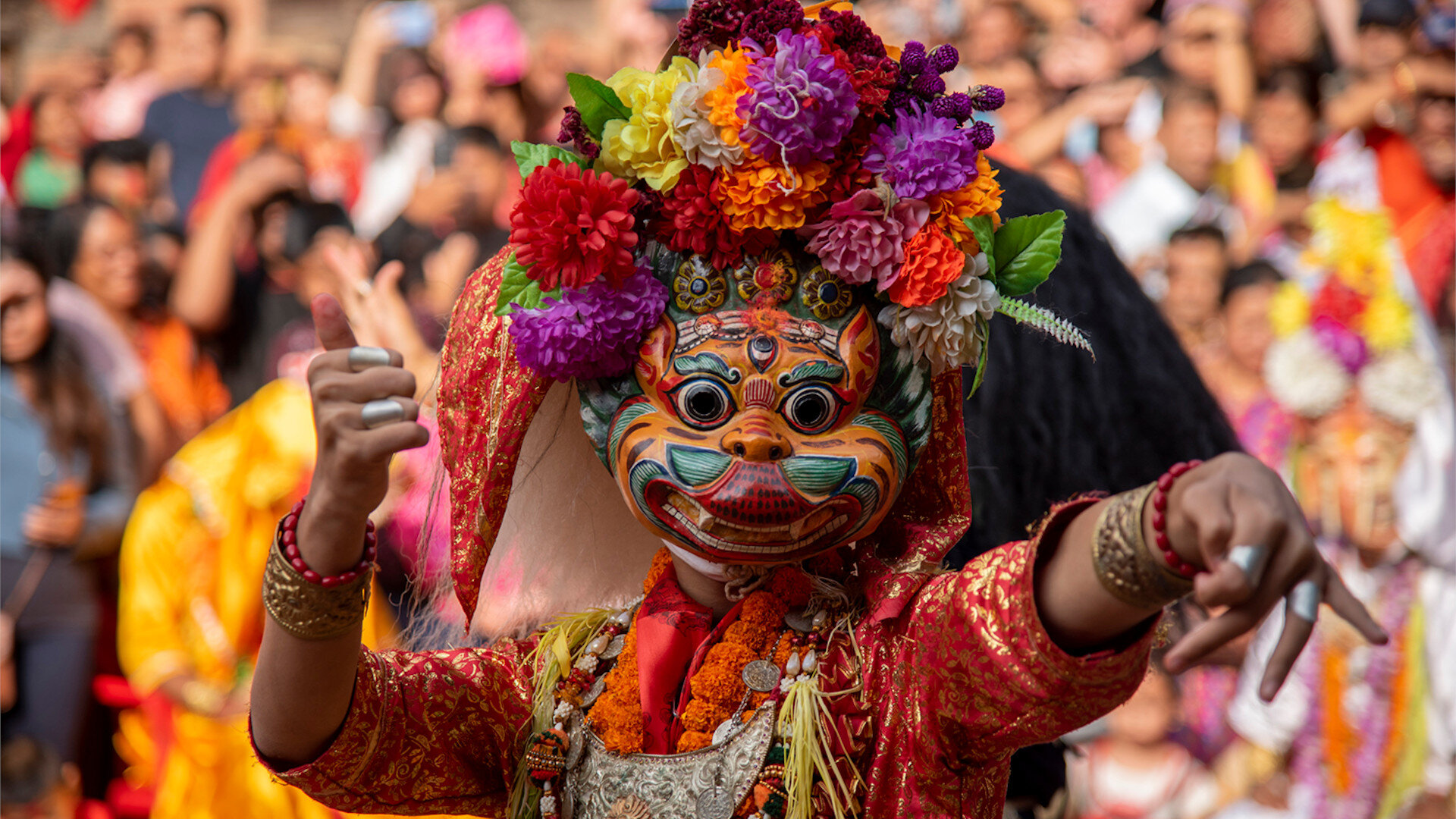Yenya Punhi
Celebrated In: September*
Yen denotes Kathmandu and Ya means celebration according to Nepal Bhasa, the language of the Newar people. Yenya Punhi is the beginning of “The Celebration of Kathmandu”, and is marked by masked dances ( Lakhey Aju, Dee Pyakhan, Sawa Bhaku, Phulukushi, Mahakali Naach), idols of Indra displayed at various points in the old city, along with Bhairav’s of Kathmandu (Swet Bhairav, Aakash Bhariav and Baka Bhairav), the tableau of Das Avatar is shown near Kumari Chhen (Kumari Home) and is highlighted by the chariot festival of the Royal Kumari of Kathmandu. Her chariot is followed by the chariots of the Living Ganesh and Bhairab which circumvents the old routes of Kathmandu in three days.
To know more about Indra Jatra: The Festival of Indra
Mohani
Celebrated In: October*
Amongst the numerous Newar festivals, Mohani is considered as the most important. Lasting for a total of 2 weeks, main celebrations, however, occur from 8th to 11th day of the lunar Nepal Era Calendar (Nepal Sambat).
The events of Mohani can be divided into two: Family & Communal and bears similarities with the celebration of Dashain. The general perception of individuals views the two festivities as the same, but Mohani is specific to the Newar community whereas elements of Dashain were introduced with the arrival of Hinduism brought by Lichhavi’s and Malla’s. Dashain in Hinduism signifies the victory of Goddess Durga over Mahisasur, Goddess Chamunda destroying the demon Chunda. Whereas in the Newar celebration of Mohani it is centred around the family’s tutelary deity.
The celebrations begin on fortnight with the planting of Barley seeds in an earthen bowl on the sand. The bowl is placed in the shrine room or Agam Chhen (God House) which is where families place the tutelary deity. This process is known as Nalaswane and has the seeds be placed in the room for a total of nine days. Eight days from the fortnight is known as Astami, on this day Kuchhi Bhoya is held. Members of the family sit in a row for a feast which encompasses two mana i.e roughly two kilograms of beaten rice. The eldest takes the place of honour at the top and the youngest at the bottom. The next day is known as Syakwa Tyakwa which falls on Navami, which is the ninth day of the fortnight in the lunar calendar. During this day, special rituals are performed in the shrine room of the tutelary deity of the household. Various tools of the household and trade are cleaned and a special offering is made to them.
Individuals also get an opportunity to visit the sacred temple of Taleju Bhawani, who is the tutelary deity of the old Malla King’s of Nepal.
The final day is known as Chala, which occurs on Dashami, the tenth day of the fortnight. The Nalaswan shoots are taken out of the shrine room and placed in the family worship Thali (Plate). A special service is commenced at the Agam Chhen, after which members of the family take blessings from their elders. They are offered a sacred red tika ( Vermilion, Rice and Yoghurt) and a black tika which is also known as Mohani Tika. This colour is only utilized during the celebration of Mohani. This is followed by a Ko: Kha (a red shredded piece of cloth) which is tied on the neck. In cases where the household has lost a family member, all the ritual celebrations are omitted in the core home, and the elders are called onto the homes of the married daughters where they offer blessings with a yellow and black tika. During the evening, families prepare for a special ceremony known as Paya. A circular ash ground is painted to symbolize the demon and is chopped in full force by members of the family with their families ancient weapons.
Communal celebrations of Mohani, are centred in various parts of Nepal Mandala. The ceremony of Paya is conducted on a communal scale in most parts of the city, which takes the outlook of a procession with scimitars. Examples of which are the Mahalaxmi Paya in Patan and Khadga Jatra in Bhaktapur. On the fifth day of the fortnight, of the lunar calendar, the procession of Pachali Bhairav is conducted. The region of Kokhana has a unique celebration during this period known as the Sikali Jatra. The Navadurga Naach (Dance) is displayed in various locales of Bhaktapur, and central Patan indulges in Ga Pyakhan (Dance of Gods).
*: As Newar festivals are celebrated according to the lunar Nepal Era calendar, the dates in the Gregorian calendar are interchangeable.















